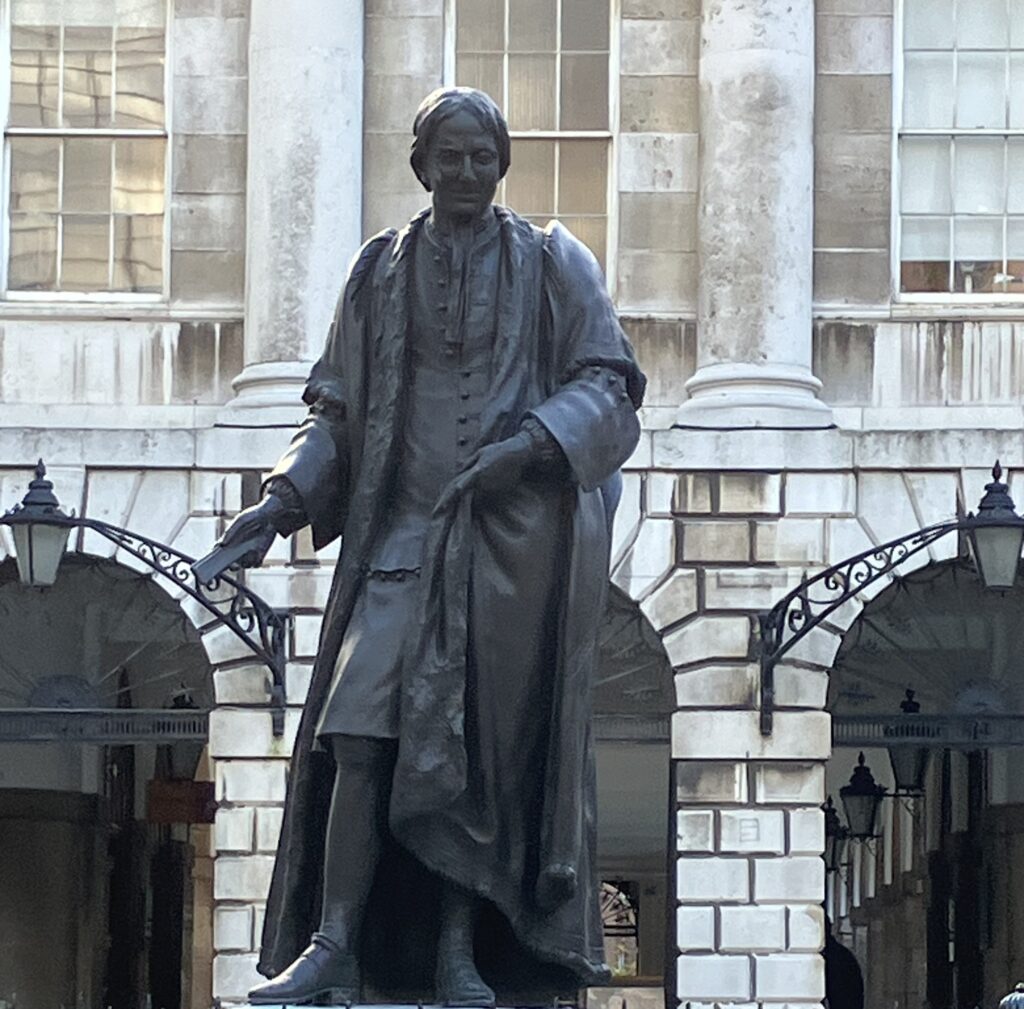Arpan K. Banerjee
Solihull, England

Thomas Guy was probably the greatest charitable benefactor in eighteenth-century Britain. At his death, he had amassed a fortune of over two hundred thousand pounds (worth around 500 million pounds in today’s money). His largesse was directed primarily at Guy’s Hospital in Southwark, London. As a governor of St Thomas’s Hospital, then situated in the London borough of Southwark, he had donated a sizeable sum of money (around £19,000) to enable the building of this new institution alongside St Thomas’s Hospital in order to deal with the increasing demands for more hospital space and handle the “incurables”. His endowment for the new hospital was one of the largest legacies to a hospital at that time.
Thomas Guy was born in 1644 in the Horselydown district of Southwark, London, off Tower Bridge Road not far from Guy’s Hospital. He was apprenticed at age sixteen to John Clarke, a bookseller and binder in London. He lived through the 1666 London Plague and Great Fire. At the end of his apprenticeship, he opened a bookshop in the Lombard Street area of London and made his money by selling classic texts to schools and religious institutions. In 1669, Oxford University gave him a licence to produce and sell the Bible, and this helped him acquire money with which he speculated and invested in the South Sea Company in the early eighteenth century. He sold his shares for a fortune in 1720 before the collapse of the company and the price-crash of the shares.
Guy was a frugal bachelor who left money not only to Guy’s Hospital but also to the Tamworth Grammar School, where he was elected Member of Parliament for the town in 1695. He also left money to Christ’s Hospital, a private school in Horsham, West Sussex.
Guy died on 27 December 1774. The following year, a statue was commissioned to be placed outside the old courtyard of Guy’s Hospital to commemorate his philanthropy. This statue stands there to this day. Richard Mead, physician at St Thomas’s and arguably England’s finest physician of the time, was one of the proposers of this commemoration. The statue was made by the Flemish sculptor Peter Scheemakers, who was also involved in producing the Shakespeare Memorial in Poets’ Corner, Westminster Abbey, London. The statue was installed in 1732.
DR. ARPAN K. BANERJEE qualified in medicine at St Thomas’s Hospital Medical School. London. He was a consultant radiologist in Birmingham 1995–2019. He was President of the radiology section of the RSM 2005–2007 and on the scientific committee of the Royal College of Radiologists 2012–2016. He was Chairman of the British Society for the History of Radiology 2012–2017. He is Chairman of ISHRAD. He is author/co-author of papers on a variety of clinical, radiological, and medical historical topics and seven books, including Classic Papers in Modern Diagnostic Radiology (2005) and The History of Radiology (OUP 2013).

Leave a Reply